Abstract
Autopsy specimens from patients with Marburg disease having at least 104.5 TCID50 of virus per gram of tissue were found to contain sufficient fluorescent antigen-positive cells to make a specific diagnosis possible in less than 3 h. Liver, heart, spleen, and kidney tissues were found to contain significant amounts of virus. Tissue suspensions, as well as blood or serum samples, inoculated into Vero cell cultures produced virus-specific immunofluorescence within 2-5 days. At least one specimen of all virus-positive persons yielded Marburg virus-specific antigen on day 2 or 3 after inoculation. Furthermore, tissues with at least 105.5 TCID50 of virus/g had Marburg antigen of sufficient titre to be used in complement fixation tests.
Full text
PDF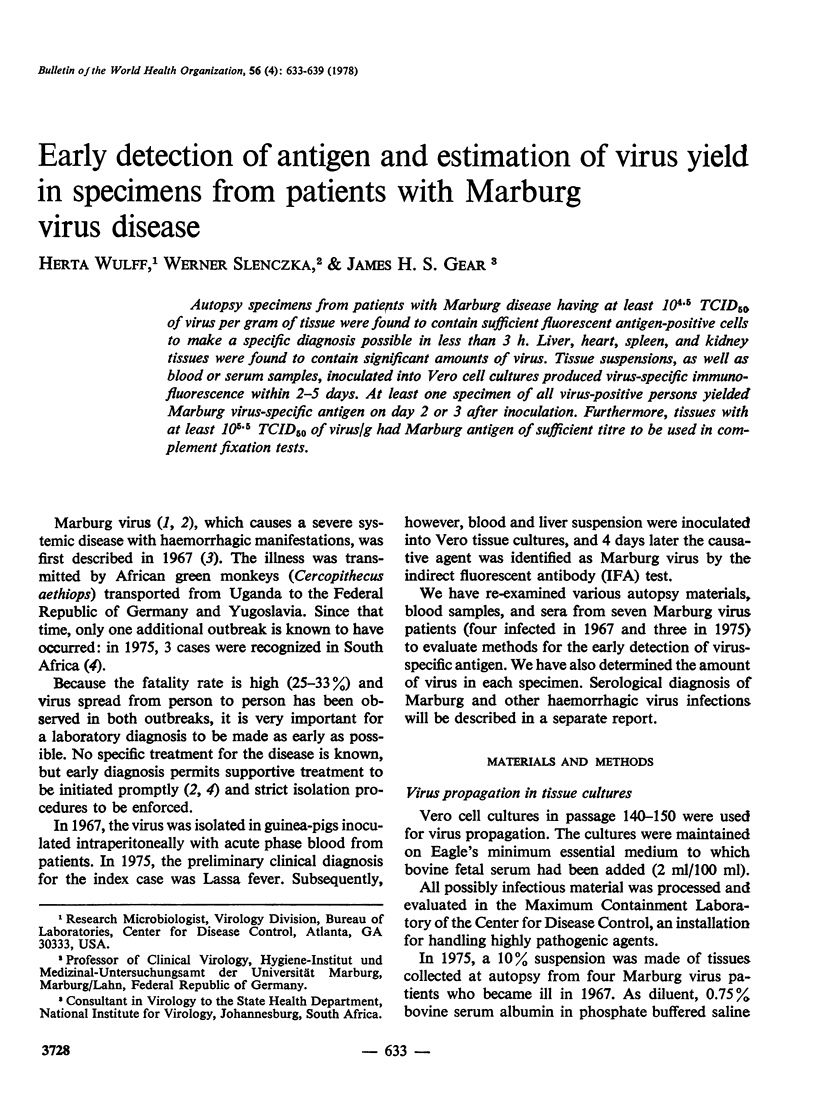
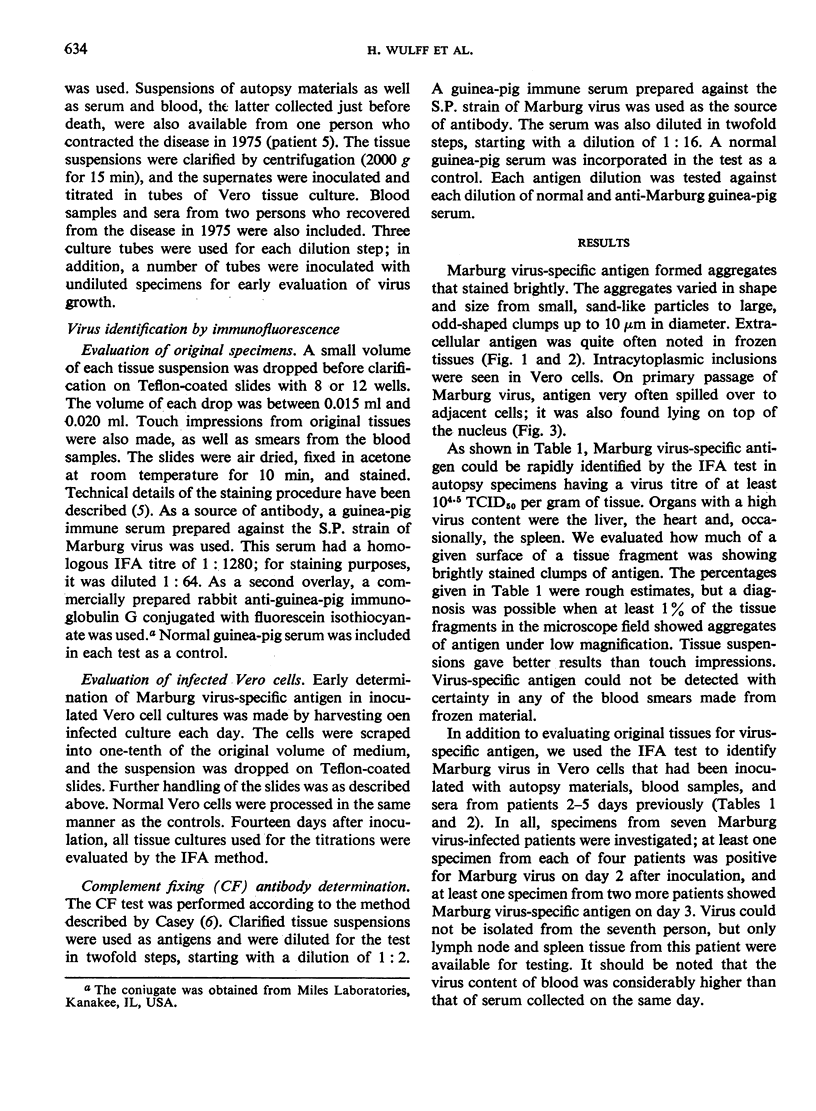
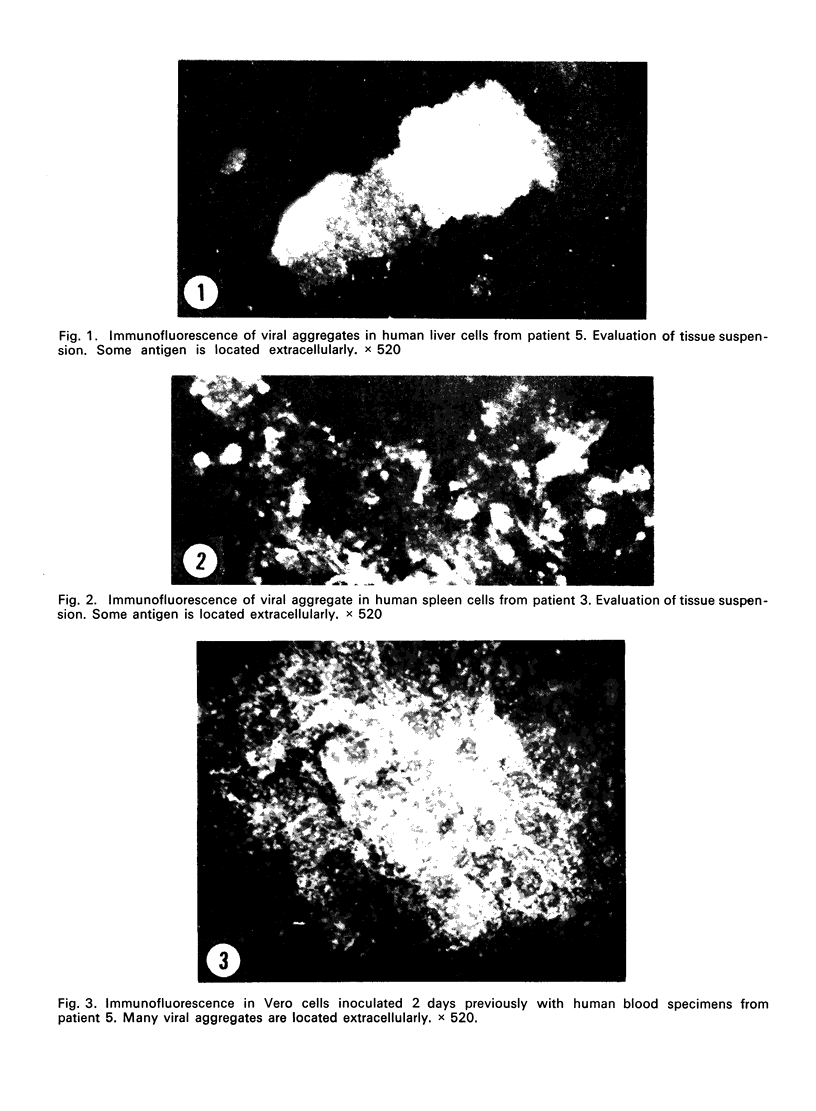

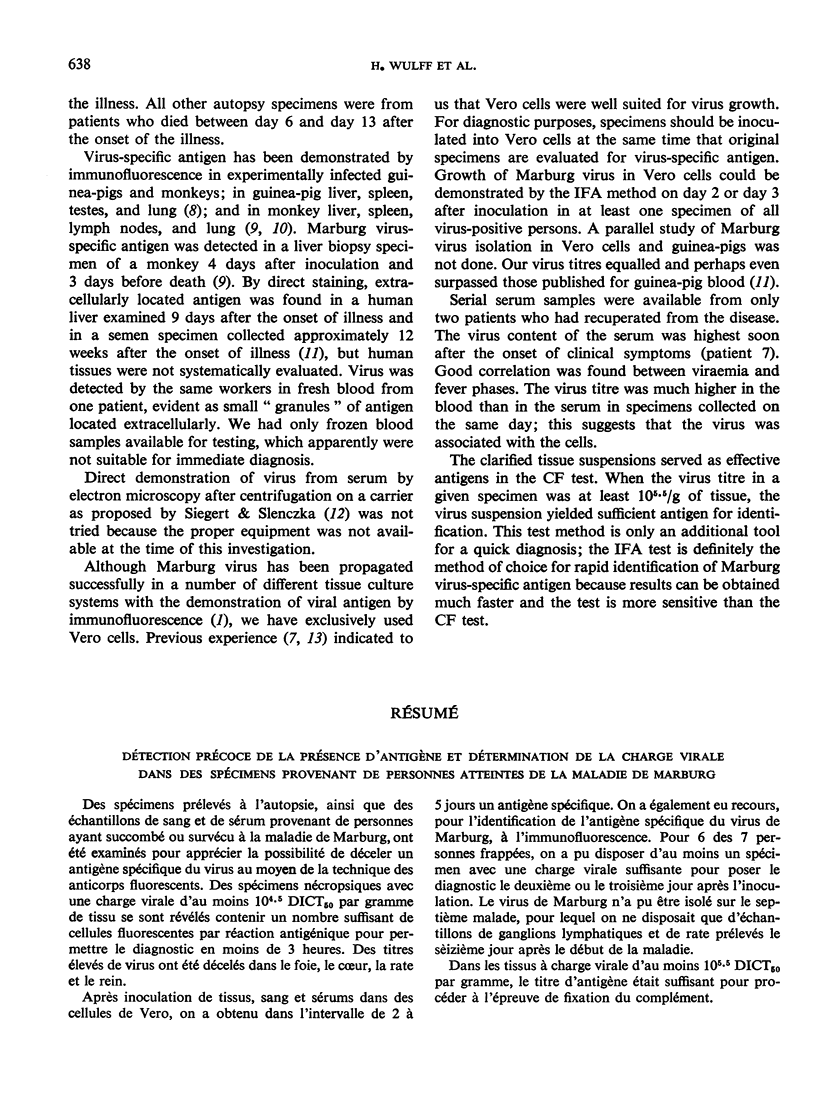
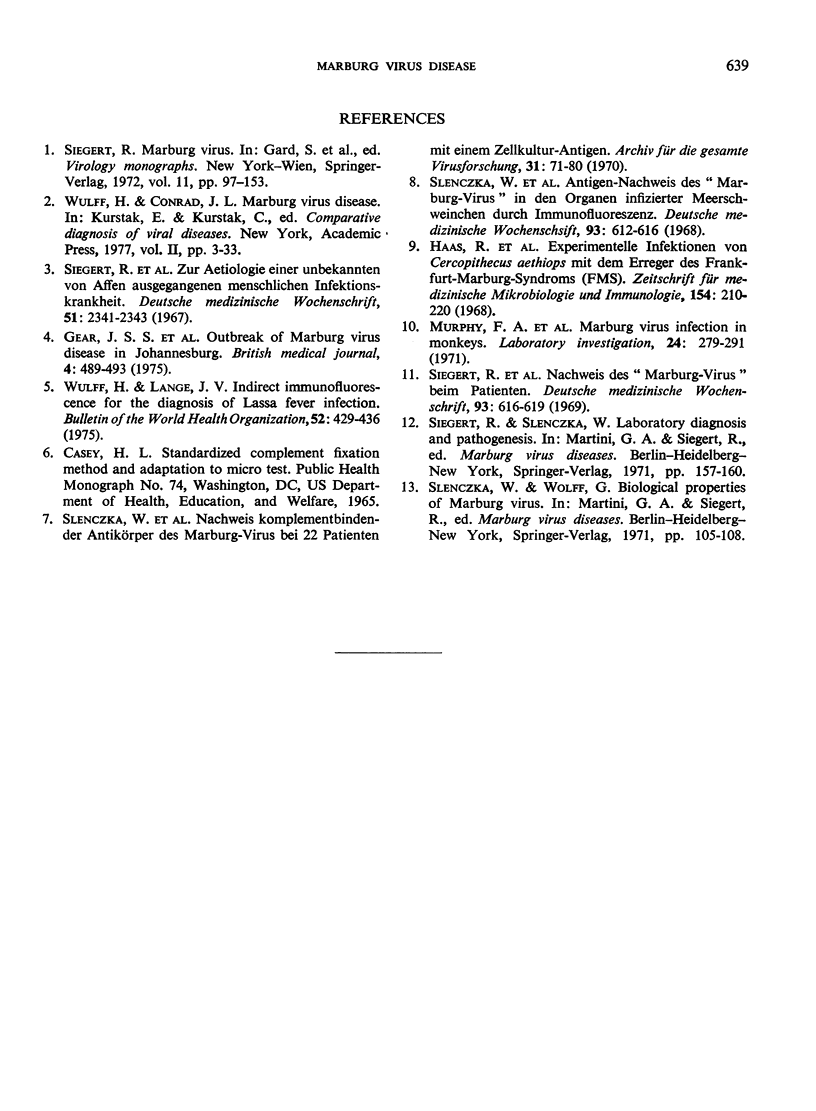
Images in this article
Selected References
These references are in PubMed. This may not be the complete list of references from this article.
- Haas R., Maass G., Müller J., Oehlert W. Experimentelle Infektionen von Cercopithecus aethiops mit dem Erreger des Frankfurt-Marburg-Syndroms (FMS) Z Med Mikrobiol Immunol. 1968;154(3):210–220. [PubMed] [Google Scholar]
- Siegert R., Shu H. L., Slenczka W. Nachweis des "Marburg-Virus" beim Patienten. Dtsch Med Wochenschr. 1968 Mar 26;93(12):616–619. doi: 10.1055/s-0028-1105105. [DOI] [PubMed] [Google Scholar]
- Slenczka W., Shu H. L., Piepenburg G., Siegert R. Antigen-Nachweis des "Marburg-Virus" in den Organen infizierter Meerschweinchen durch Immunfluoreszenz. Dtsch Med Wochenschr. 1968 Mar 26;93(12):612–616. doi: 10.1055/s-0028-1105104. [DOI] [PubMed] [Google Scholar]
- Slenczka W., Siegert R., Wolff G. Nachweis komplementbindender Antikörper des Marburg-Virus bei 22 Patienten mit einem Zellkultur-Antigen. Arch Gesamte Virusforsch. 1970;31(1):71–80. [PubMed] [Google Scholar]
- Wulff H., Lange J. V. Indirect immunofluorescence for the diagnosis of Lassa fever infection. Bull World Health Organ. 1975;52(4-6):429–436. [PMC free article] [PubMed] [Google Scholar]





